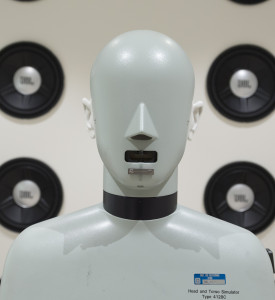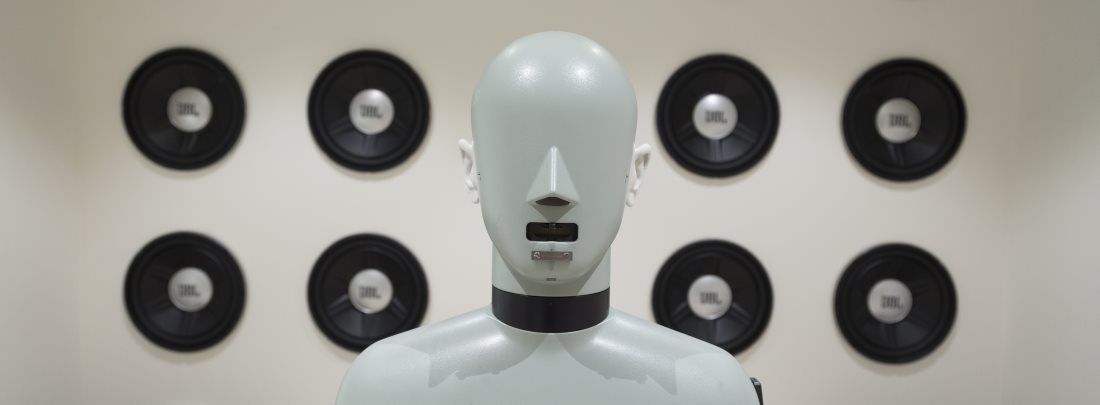Sound is an essential carrier of information in communication between people. Our hearing system and brains are very well-adapted to receiving and processing information, even in difficult situations with strong background noise or multiple people talking at once. Communication acoustics is about improving, creating, or transmitting sound that listeners want to hear.
Topics

- Electroacoustics: Making quality recordings requires quality microphones, and quality playback similarly requires quality loudspeaker systems. Electroacoustics is the science of designing sound equipment for recording and playback.
- Hearing and perception: Our ears transmit sound to our brains as electrical signals, and it’s up to the brain how these signals are interpreted. Understanding this human auditory system is essential for understanding hearing damage and how to counter it, how to create artificial sound that sounds natural and convincing, and how to compress sound files without reducing their subjective quality.
- Musical acoustics and technology: How do various musical instruments work, and how should we record their sound? What kind of musical sounds do we consider pleasing, and how can we create these sounds? These questions and more are covered in musical acoustics and music technology.
- Room acoustics: If we understand how a room’s materials and shape determine the acoustic environment inside it, we can design e.g. concert halls, cinemas, meeting rooms, and auditoria that provide a far better experience.
- 3D sound and auralisation: By utilising the sounds from both ears, the brain can understand the acoustic environment and tell where sounds are coming from. With help from our understanding of this process, we can create convincing artificial sound environments and help people differentiate between speakers in telecommunications systems.
- Acoustic signal processing: Signal processing is a wide field with many applications. When it is applied to audible sound, however, it is also important to bear in mind how we percieve sound to avoid significant reduction in sound quality.
- Hearing aids: Hearing damage is more profound than just our ears “turning down the sound”. Therefore, hearing aids cannot correct it as easily as glasses can correct near- or far-sightedness. Building effective hearing aids requires deep knowledge about the human auditory system, signal processing, and hardware.
Courses at NTNU

- TTT4180 Technical Acoustics: General introductory course on acoustics, which also covers generation and propagation of sound in simple systems, and the fundamentals of room acoustics.
- TTT4197 Musical Acoustics: Gives an introduction to acoustical perspectives on music, musical instruments, music perception, and computer analysis and synthesis of music.
- TTT4170 Audio Technology: Covers electroacoustics (microphones and loudspeakers), and room acoustics (sound fields and our perception of them) in more depth than Technical Acoustics.
- TTT4250 Acoustic Measurement Techniques: Provides background on typical measurement tasks in various fields of acoustics, including room acoustics, hearing, and psychoacoustics.
- Additional PhD-level courses are also available.



